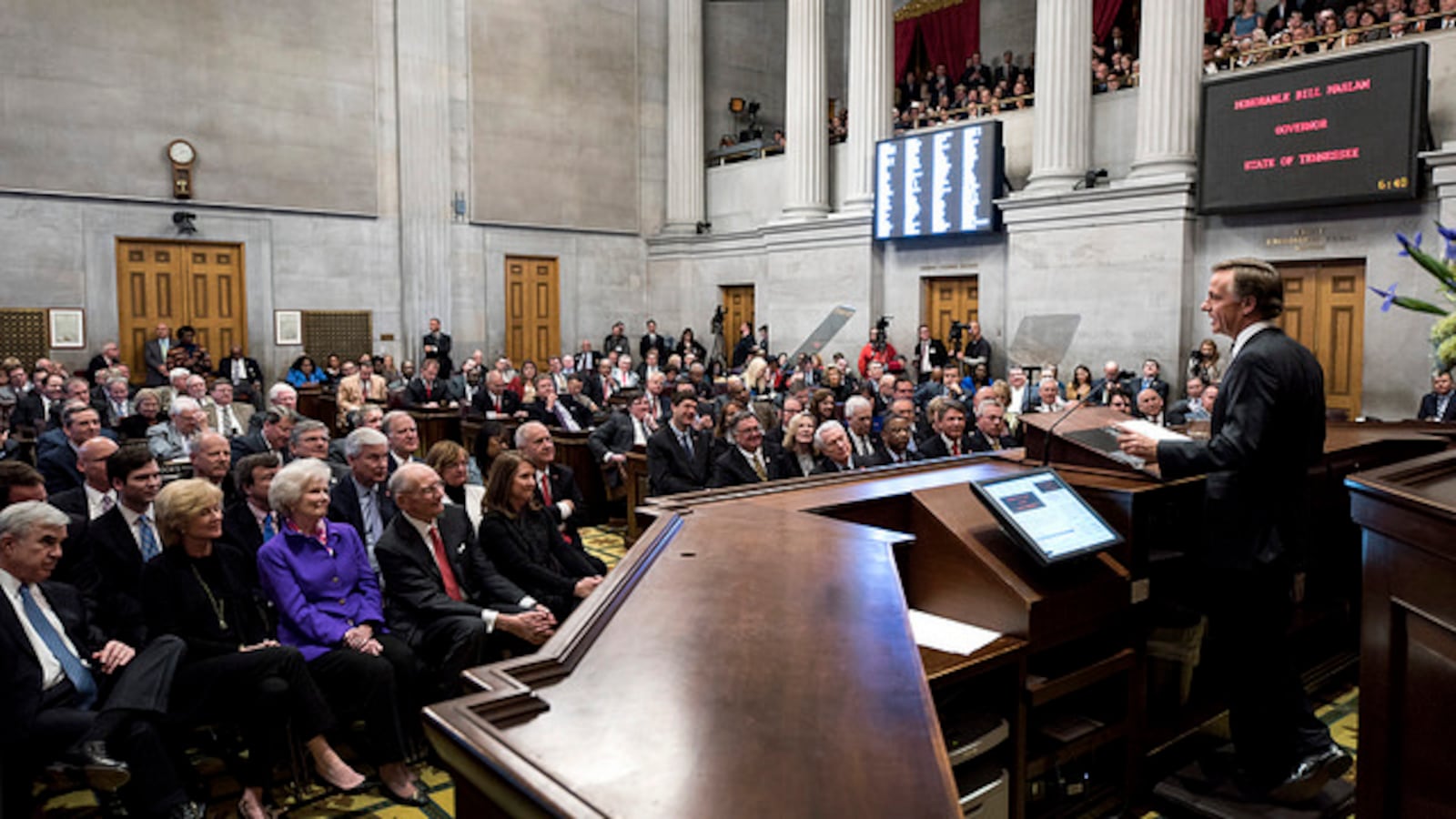Gov. Bill Haslam’s proposal to alter the way Tennessee funds its public schools is winding through the legislature, setting the stage for a potential increase of $261 million in K-12 education spending next year while also addressing the state’s ever-present malaise over the state of school funding.
Haslam championed his plan to update the state’s spending formula, called the Basic Education Program, or BEP, in his State of the State address in February. The resulting changes, as well as one-time investments in literacy and teacher pay, would amount to “the largest investment in K-12 education in Tennessee’s history without a tax increase,” Haslam said at the time.
The state defines the BEP as the amount of funds sufficient to provide a “basic level of education” for Tennessee students. The formula was created in 1992 after a group of small Tennessee school districts banded together in the late 1980s to sue the state for more funding. The legislature revised the formula in 2007 to a version known as BEP 2.0, but that version has never been fully funded.
Haslam has been examining how to change the BEP since at least 2014, even before two separate lawsuits were filed last year by Shelby County Schools and by seven districts in southeastern Tennessee led by Hamilton County Schools. Last month, Haslam told his teachers cabinet that BEP is “one of the hardest things” he deals with because Tennessee’s 142 districts vary so much in size, demographics and wealth.
“We worked really hard to balance the competing needs,” he told teachers.
His proposed changes are to be considered next in the Senate Finance Committee and a House finance subcommittee. Should the bill pass the legislature, here’s what it would mean:
BEP 2.0 is done for.
In 2007, then-Gov. Phil Bredesen proudly unveiled BEP 2.0 as a school spending plan that would infuse school districts with almost $500 million more.
“The chance is here to seize the moment,” he told the General Assembly of the ambitious plan, which would fully fund the state’s portion of costs associated with “at-risk students;” fund the state’s portion of student growth costs immediately; expand funding for the state’s growing English language learner population; and update the ELL student-to-teacher ratio from 1:45 to 1:30.
Then the recession hit, halting BEP 2.0’s rollout. The state opted instead to use a hybrid formula — half BEP 2.0, which was developed by the University of Tennessee, and half of the original formula, which was developed by the Tennessee Advisory Commission on Intergovernmental Relations. Many educators eagerly anticipated the eventual day the legislature would fully fund BEP 2.0.
This budget nips that hope in the bud by enshrining the hybrid formula into law.
But districts would get more money for teacher salaries, English language learners, technology, special education and other components provided for in BEP 2.0.
Though the governor’s plan nixes BEP 2.0, it permanently increases the state’s spending on English language learners (funding ELL teachers at a 1:20 student ratio and translators at a 1:200 student ratio), and special education students, technology and teacher pay, especially when it comes to teachers insurance. For years, the state only paid for teachers to have 10 months of health insurance. Last year, the General Assembly mandated that the state provide for 11 months of insurance. Haslam’s proposal this year finally gives teachers’ year-round insurance.
Stephen Smith, deputy commissioner of education, recently told lawmakers that the state is now exceeding its commitment set forth in BEP 2.0 by $178 million.
While Haslam proposes to increase money allotted for salaries, many districts will be required to up local spending on salaries too. Any resulting increase in state funding of instructional components is accompanied by a 30 percent increase in required local funding, on average. Individual districts may have local matches more or less than 30 percent, depending on their affluence. BEP 2.0 would have upped the state’s share of education costs to 75 percent.
Some districts will receive less money in other areas.
Another carryover from BEP 2.0 is the eventual elimination of a “cost differential factor,” known as CDF, that 16 districts in five counties receive to address a higher cost of living. Reducing the CDF would cut state spending by about $34.7 million. Almost half of that money would have gone to Shelby County Schools and the municipal districts in Shelby County. Other counties that would be impacted are Davidson, Anderson, Williamson and Sullivan.
Want to know more about the BEP proposal? Check out this report from the Tennessee Comptroller’s Office of Research and Education Accountability.
Clarification: March 24, 2016: The story has also been clarified to reflect that the state will have exceeded the funding commitment set forth by BEP 2.0 in 2007 in total, not just in teacher salaries.

